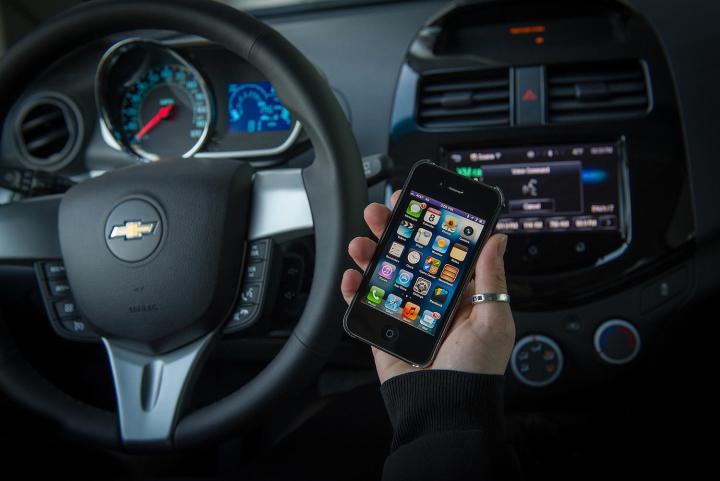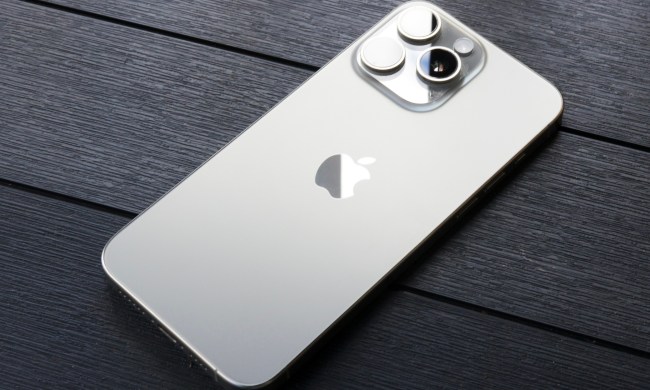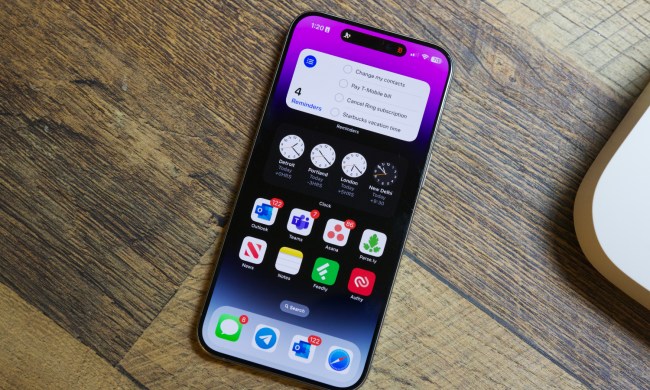
For Apple, the dashboard is the final frontier. From computers to music to phones, Cupertino has seemingly assimilated every realm of tech like the Borg creeping across the Delta Quadrant, but it hasn’t really done anything involving cars.
That is about to change.
Apple recently took its first step into the automotive world with Siri Eyes Free, a system that allows drivers of certain models (so far, just the Chevrolet Spark, Spark EV and Sonic) to control Siri using steering wheel-mounted buttons. Next year, Apple will expand beyond Siri with a car-friendly version of iOS.
Why?
The reasoning behind Apple’s car tech about-face is a bit of a mystery. While Steve Jobs enjoyed cruising around in a Mercedes SL and was even rumored to have dreamed up an “iCar,” he never gave any serious attention to in-car tech even while rivals Microsoft and others were racing to take over dashboards. So why now?
Apple is most likely taking a logical business step. In-car tech is a fast-growing segment, with more cars offering some kind of smartphone integration and more consumers considering the phone-car connection a valuable feature during the buying process.
“Just like the App Store is a key part of the ecosystem and iTunes and all of our content are key, and the services we provide from messaging to Siri and so forth, having something in the automobile is very, very important,” Apple CEO Tim Cook recently told Bloomberg.
While Apple has virtually no presence in the automotive infotainment segment beyond plugging in for music and phone ops, competitors like Blackberry and Microsoft have been working with car companies to develop proprietary systems that could also block Apple’s access or at least minimize it in comparison.
Working with carmakers also gives Apple a potential slice of the information those systems generate for drivers. All of the music they listen to and all of the local points of interest they look up represent a significant chunk of change and valuable data.
 How?
How?
Apple recently took its first step toward dashboard domination with Siri Eyes Free. The name says it all: Siri Eyes Free is supposed to allow drivers to use their smartphones to do myriad tasks while still keeping their eyes on the road.
It works by using the steering wheel controls normally reserved for Bluetooth phone calls to activate Siri. Other than moving the controls to the steering wheel, the system works just like the normal version of Siri. That is, except for one safety related difference: any Siri functions that display web results are disabled, because the driver would have to look at his or her phone to see them.
The next step will be full integration of iOS 7 into vehicles from 12 manufacturers including Chevrolet, Nissan, and Mercedes-Benz. This will include an iOS-like home screen for the cars’ infotainment display, and more Apple-specific features.
Of course, no car trip would be complete without music, so Apple will add iTunes Radio to the menu. This new streaming service gives drivers another choice of where to get their music, because with Pandora, Spotify, Stitcher, SiriusXM, AM, FM, CD, MP3, etc., there really aren’t enough choices. But with iTunes radio, iPhone owners will also likely have improved cloud access and voice control over their main music library even if its not all on their phone.
iTunes Radio will also take on established music streaming brands like Pandora, which says it has 2.5 million U.S. customers listening in their cars and is already present as an in-car app in some infotainment systems.
In a move that will probably make current users groan, Apple Maps will also be taking on navigation duties. The system famous for not being as good as Google Maps could add an extra layer of tech cred to a generic system, as Google features already do in several cars. Apple has been steadily updating Maps and it’s better now, but it’s not there yet. But it could catch up.
So Apple will soon have its own versions of popular infotainment features in dozens of car models, but what’s in it for the carmakers? By signing on for Apple-specific tech, they are taking just as big of a change as Apple itself.
General Motors was the first of the group to bite, bringing Siri Eyes Free to the newly minted 2014 Chevy Sonic, Spark, and Spark EV earlier this year. The company hopes to play on the “halo effect” of the Apple name, using the credibility Cupertino has with tech-happy Millennials and Gen-Xers to move metal, Annalisa Bluhm of Chevrolet PR said.
Chevy’s new small cars are indeed attracting new buyers: 63 percent of Spark owners are new to the brand, Bluhm said. Having Apple in the dash may move even more people to those models.
 What does this mean for the future of in-car infotainment?
What does this mean for the future of in-car infotainment?
Design is an important part of everything that Apple does, but so far all other tech companies have left the shaping of the dashboards that house their infotainment systems to the carmakers. Will Apple change that?
Apple showed a center stack screen mockup with its iOS in the Car preview but, as the eagle-eyed observers at Apple Insider pointed out, it was actually the screen from a 2014 Spark.
From a practical standpoint it seems more likely that Apple’s design sensibilities will be limited to what drivers see on their screens. The sheer complexity of designing center stacks for the numerous models slated to get Apple integration will probably make anything more ambitious impossible.
Whether non-Apple buyers will accept a car that is geared (no pun intended) heavily toward Apple is another question. Chevy’s Siri-equipped cars can still integrate with other devices, offering the full range of functions including the voice controls already offered by the car’s tech suite. Siri is just one more feature on top of an existing tech options list. If you’re an iPhone devotee, that’s great but note that other phones are not really left out in the cold.
While the carmakers have not announced how they will integrate iOS into their products, it could follow GM’s example: non-Apple users will still be able to play, but the system might offer an extra incentive for someone with an iPhone in their pocket.
A dashboard revolution?
Integrating smartphone-like functions into cars is not going well. Even the best systems are just functional and many systems are just plain maddening and unreliable. Dash tech is not yet highly useful like nearly every other form of personal technology consumers we now operate. Techies are waiting for something that will take in-car infotainment out of the Stone Age and that goes double for those who don’t know USB from SCSI.
Will some focus on the car by Apple be the leap forward we all crave? Apple has revolutionized many things, but Siri Eyes Free and iOS in the Car are more of a bloodless coup that full-blown revolution. The features are familiar; it’s just the setting that is changing. Of course, there’s still much that Apple and the car companies aren’t telling us quite yet. Watch this space.
Got an iPhone? If it could better integrate with a car, does that sway your buying decision? How important is phone integration to you? Tell us in comments.




